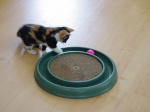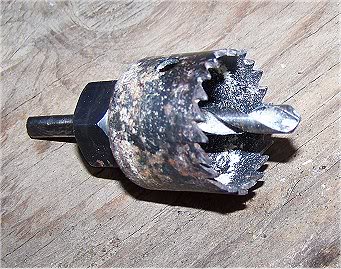Search
Latest topics
» N & C Midwest: Nov. Dec. 2024by OhioGardener Today at 4:08 pm
» Catalog season has begun!
by cyclonegardener Today at 9:12 am
» Happy Birthday!!
by Scorpio Rising Yesterday at 7:21 am
» Butterbaby Hybrid Squash (Butternut)
by Scorpio Rising 11/24/2024, 8:19 pm
» Indoor Lighting for Kitchen Herbs & Lettuce
by OhioGardener 11/22/2024, 6:58 pm
» Interesting Marketing for Compost
by OhioGardener 11/21/2024, 7:29 pm
» How does green turn to brown?
by OhioGardener 11/21/2024, 4:58 pm
» Ohio Gardener's Greenhouse
by OhioGardener 11/21/2024, 12:16 pm
» Tree roots, yeeessss.....
by sanderson 11/20/2024, 2:21 am
» The SFG Journey-Biowash
by has55 11/19/2024, 7:37 pm
» What are you eating from your garden today?
by OhioGardener 11/19/2024, 8:27 am
» Cooked worms?
by KiwiSFGnewbie 11/19/2024, 1:04 am
» New SFG gardener in Auckland
by KiwiSFGnewbie 11/16/2024, 11:25 pm
» Kiwi's SFG Adventure
by KiwiSFGnewbie 11/12/2024, 7:10 pm
» Thanksgiving Cactus
by OhioGardener 11/12/2024, 5:40 pm
» Need Garden Layout Feedback
by markqz 11/9/2024, 9:16 pm
» Thai Basil
by Scorpio Rising 11/8/2024, 8:52 pm
» How best to keep a fallow SFG bed
by KiwiSFGnewbie 11/8/2024, 8:11 pm
» Preserving A Bumper Tomato Harvest with Freezing vs Canning
by plantoid 11/7/2024, 11:36 am
» Mark's first SFG
by sanderson 11/6/2024, 11:51 pm
» What Have You Picked From Your Garden Today
by OhioGardener 11/5/2024, 2:29 pm
» Greetings from Southeastern Wisconsin
by sanderson 11/5/2024, 2:01 pm
» Spinning Compost Bin-need some ideas
by rtfm 11/2/2024, 7:49 pm
» Growing fruit trees in Auckland
by OhioGardener 10/31/2024, 4:23 pm
» Vermiculite -- shipping sale through 10/31/2024
by markqz 10/30/2024, 2:27 pm
» N & C Midwest: October 2024
by Scorpio Rising 10/30/2024, 10:38 am
» Old Mulch and Closing Beds for Winter
by sanderson 10/26/2024, 11:00 pm
» Hello from Land of Umpqua, Oregon Zone 8b
by sanderson 10/25/2024, 3:14 pm
» Hello everyone!
by SFGHQSTAFF 10/24/2024, 3:22 pm
» Senior Gardeners
by sanderson 10/23/2024, 6:09 pm
Google
Worm Tube for the SFG
+116
OhioGardener
AtlantaTerry
YorkR88
Becky8813
vortex
NanSFG
momvet
ralitaco
rhfollett
CitizenKate
AtlantaMarie
FRED58
Cajun Cappy
has55
bbroomm
Esteban
Drpepperz
jimmy cee
grownsunshine
Frenchbean
Marc Iverson
Rosey
Inkspirations
GiGiTN
windsong969
sanderson
Yardslave
jazzycat
ETNRedClay
SherrieLou
audrey.jeanne.roberts
EggplantWizard
Turan
jplee3
petunia52
Kelejan
mollyhespra
hamguy
squaredeal
lzalvis
Triciasgarden
crs
Coelli
elysia
UnderTheBlackWalnut
GWN
llama momma
JustMe
kimberlee
kittykat
Roseinarosecity
FamilyGardening
ltree74
Boz
curio
AvaDGardner
bbzoe
Goosegirl
trukrebew
sfg4uKim
Windsor.Parker
plantoid
martha
newstart
yolos
MoneyMan94
RoOsTeR
Luci Dawson
ishootaction
janezee
hankyknot
camprn
mtgrl788
Joan N
tabletopper
H_TX
shannon1
JBS636
Nonna.PapaVino
Patch
Miss M
FarmerValerie
model a man
staf74
OahuSFG
walshevak
greenfingers
outsideasy
SouthJerseySquareFoot
sgeades
The Cat's Other Mother
WardinWake
carolintexas
dmpower
middlemamma
ChristyMC
fw2000
Megan
Dietryin
miinva
Chopper
kiwirose
junequilt
Odd Duck
PeggyC
Bec
sbeach
Lavender Debs
boffer
mckr3441
jenjehle
milaneyjane
timwardell
ColoradoNatureGirl
choksaw
Josh
120 posters
Page 1 of 21
Page 1 of 21 • 1, 2, 3 ... 11 ... 21 
 Worm Tube for the SFG
Worm Tube for the SFG
I read in a gardening newsletter about Worm Tubes in your garden and how to make them. I made one for my sfg and wanted to share how to do it with all of you.
We have talked about worms in sfgs before and this might just be a way to do it.
I took a 5 inch PVC pipe and my dad helped me cut inch size holes in it, up to the 6 inch depth of a sfg box.

I put it in my sfg

And I drove a stake into the ground to give it support so it wouldn't fall over

I added some compost

added some worms

some left over food

Then for a lid, I took a flower pot and glued a screen over the hole so flies won't get in.


The article that I read said the worms can leave the tube through the holes and go out into the garden, leaving worm castings in the garden, then come back into it for food.
I thought it's worth a try.
We have talked about worms in sfgs before and this might just be a way to do it.
I took a 5 inch PVC pipe and my dad helped me cut inch size holes in it, up to the 6 inch depth of a sfg box.

I put it in my sfg

And I drove a stake into the ground to give it support so it wouldn't fall over

I added some compost

added some worms

some left over food

Then for a lid, I took a flower pot and glued a screen over the hole so flies won't get in.


The article that I read said the worms can leave the tube through the holes and go out into the garden, leaving worm castings in the garden, then come back into it for food.
I thought it's worth a try.
quincy47 likes this post
 Re: Worm Tube for the SFG
Re: Worm Tube for the SFG
Not a bad idea pretty easy and simple design to boot nice find and nice job on the mini tutorial 

choksaw-
 Posts : 459
Posts : 459
Join date : 2010-03-02
Age : 49
Location : New Port Richey FL.
 Re: Worm Tube for the SFG
Re: Worm Tube for the SFG
Great idea! I was just looking into Worm Buckets, what a great combination without having to take your worm casing to your garden, they do it for you. Let us know how it goes Josh!
Your tutorial was great!
Stephanie
Your tutorial was great!
Stephanie


ColoradoNatureGirl-
 Posts : 58
Posts : 58
Join date : 2010-04-19
Age : 45
Location : Littleton, CO
 Re: Worm Tube for the SFG
Re: Worm Tube for the SFG
Great idea---definately will have to try it.
Rebecca
Rebecca

milaneyjane- Posts : 422
Join date : 2010-03-18
Location : MN Zone 4
 question about worm tube
question about worm tube
Sorry if this is a dumb quesiton... but can someone explain exactly what the benefits of doing this would be? I'm guessing the worms go out into the garden and leave their waste? So instead of putting your normal items all in the compost, you put some into this tube?
I would love to understand the benefits better. Not sure I want to give up a square of my veggie space for a worm tube unless it's really worth it. But I may just do it if it really have a positive impact on my garden
Thanks in advance for the info!
I would love to understand the benefits better. Not sure I want to give up a square of my veggie space for a worm tube unless it's really worth it. But I may just do it if it really have a positive impact on my garden
Thanks in advance for the info!
 Re: Worm Tube for the SFG
Re: Worm Tube for the SFG
Josh, that's a great idea! I love worms in my garden. Now I know how to make that happen. Can you tell me why you made the holes so large? Would smaller holes work?
Thank you!
Claire
Thank you!

Claire

mckr3441
Certified SFG Instructor-
 Posts : 759
Posts : 759
Join date : 2010-03-05
Age : 84
Location : Cleveland Heights, Ohio (5b)
 Re: Worm Tube for the SFG
Re: Worm Tube for the SFG
mckr3441 wrote:Can you tell me why you made the holes so large?
He must feed them too well!

 idea, Josh
idea, Josh Re: Worm Tube for the SFG
Re: Worm Tube for the SFG
Most long-time gardeners (and many agricultural experts) will tell you that worm castings (worm poop) is one of the absolute best fertilizers you could ever use on your garden. A tube like this would create a multiple win/win because the worms would enter the pipe through the larges holes (needed for easy access - small holes would limit their ability to enter and exit - a 1" borer bit on your drill will do this), eat the compost (just as they do in the much discussed Wiggler Hilton in another forum thread), then exit the tube, aerate the soil, and leave poop in their wake.jenjehle wrote:Sorry if this is a dumb quesiton... but can someone explain exactly what the benefits of doing this would be? I'm guessing the worms go out into the garden and leave their waste? So instead of putting your normal items all in the compost, you put some into this tube?
Thanks in advance for the info![/color][/font]
I can easily see the benefits of this in normal soil (plain 'ol dirt) but what about Mel's Mix. Another thread discussed the prescence/absences of worms in Mel's Mix. The bottom 6 inches of my 12" beds are filled with amended topsoil and is LOADED with earthworms. The top 6" (all Mel's Mix) not so much. So what's the consensus - do most of you find earthworms in your Mel's Mix?
@Josh - Do you already have earthworms in your boxes? In your Mel's Mix? Curious minds want to know.
Thanks.
 Re: Worm Tube for the SFG
Re: Worm Tube for the SFG
Thanks everyone,
jenjehle, I didn't give up the whole square, the pipe is only 5 inches round and I placed it in the corner of a square, that still leaves me enough room to plant radish, onions, even a smaller plant like a pepper plant still should grow ok there. I put my worm tube in that square because it didn't have anything planted there yet, but a person might want to put it in the middle of their garden.
Thanks Tim for your answers, I agree with Tim, I think the holes are 1 inch to give the worms lots space to come and go freely from garden to tube.
One of the benefits of having the worm tube directly in your garden rather than add your left over food scraps to your compost pile is that your compost pile takes time to break down before it becomes usable compost, worm poop is ready to use instantly and the worms are spreading it for you.
In my worm compost bin the worms travel all over in it, they do not stay just inside the bedding, often they are on the lid and sides of the box leaving worm poop everywhere with in the bin, so I'm pretty sure the worms are going to travel about in the sfg.
We talked about in our other discussion about there would maybe not be enough food to feed worms in your sfg, this would solve that problem and not be messy.
Tim to answer your question about do I have worms in my sfg, yes I do but not alot of them. They have traveled there on their own, or have hatched from worm cocoons from when I added worm compost from my worm compost bin.
Hope I explained everything ok.
I can give it a try...I'll let you know how I do with it.
Thanks everyone!
jenjehle, I didn't give up the whole square, the pipe is only 5 inches round and I placed it in the corner of a square, that still leaves me enough room to plant radish, onions, even a smaller plant like a pepper plant still should grow ok there. I put my worm tube in that square because it didn't have anything planted there yet, but a person might want to put it in the middle of their garden.
Thanks Tim for your answers, I agree with Tim, I think the holes are 1 inch to give the worms lots space to come and go freely from garden to tube.
One of the benefits of having the worm tube directly in your garden rather than add your left over food scraps to your compost pile is that your compost pile takes time to break down before it becomes usable compost, worm poop is ready to use instantly and the worms are spreading it for you.
In my worm compost bin the worms travel all over in it, they do not stay just inside the bedding, often they are on the lid and sides of the box leaving worm poop everywhere with in the bin, so I'm pretty sure the worms are going to travel about in the sfg.
We talked about in our other discussion about there would maybe not be enough food to feed worms in your sfg, this would solve that problem and not be messy.
Tim to answer your question about do I have worms in my sfg, yes I do but not alot of them. They have traveled there on their own, or have hatched from worm cocoons from when I added worm compost from my worm compost bin.
Now we know that Mel's mix is the perfect mix for our plants, and we just need to add some compost when we harvest a square for the next new crop, but I read this in an article, here is a quote from the professor:I can easily see the benefits of this in normal soil (plain 'ol dirt)
but what about Mel's Mix.
"Even when we provided all plants with enough
fertilizer for optimum growth, plants still grew better when the soil
was amended with worm compost," reports Jim Metzger, Ph.D., horticulture
professor at Ohio State.
Hope I explained everything ok.
I can give it a try...I'll let you know how I do with it.
Thanks everyone!
 Re: Worm Tube for the SFG
Re: Worm Tube for the SFG
I wouldn't have thought to feed them that way. My gardens are full of worms (doesn't that sound gross? maybe I should call them red wigglers) Worm "castings" (me, I like to call it poop but am ever warned that I spend too much time with 5th grade boys), ARE great for the garden but even better is what they do to keep the soil soft.
I started putting red wigglers into pots of herbs in my kitchen window. I think one of my boys brought one in and asked if he could keep it as a pet (??? I KNOW). We dropped him (him??) into a pot of oregano in the window. A funny thing happened, the soil in that pot got soft instead of the usual house plant hard. I never added any fertilizer (not that I would have added chemicals, but there were “teas”). We only sprinkled cornmeal on top of the soil of the pot to feed him, because my dad used to toss it on the bin of fishing worms he kept in the basement. Two years later the soil was fresh and bouncy while other soil from the same mix in other house plants was like brick.
Most of what we learned was by accident.
Make a happy worm habitat instead of striving for good root anchors.
Do not drown nor parch wormy.....mr oregano was much happier with a happy wormy (so was miss african violet)
Instead of feeding the plant, feed the worm. House plant worms were only fed cornmeal because we didn't know any better. No matter what we fed other house plants, no plant did as well as the plant with the worm, not just because of the "castings" but because of the condition of the soil as he tunneled about.
Deborah ....who is sure that worm had a name but I'll be jiggered if I can remember it.
I started putting red wigglers into pots of herbs in my kitchen window. I think one of my boys brought one in and asked if he could keep it as a pet (??? I KNOW). We dropped him (him??) into a pot of oregano in the window. A funny thing happened, the soil in that pot got soft instead of the usual house plant hard. I never added any fertilizer (not that I would have added chemicals, but there were “teas”). We only sprinkled cornmeal on top of the soil of the pot to feed him, because my dad used to toss it on the bin of fishing worms he kept in the basement. Two years later the soil was fresh and bouncy while other soil from the same mix in other house plants was like brick.
Most of what we learned was by accident.
Make a happy worm habitat instead of striving for good root anchors.
Do not drown nor parch wormy.....mr oregano was much happier with a happy wormy (so was miss african violet)
Instead of feeding the plant, feed the worm. House plant worms were only fed cornmeal because we didn't know any better. No matter what we fed other house plants, no plant did as well as the plant with the worm, not just because of the "castings" but because of the condition of the soil as he tunneled about.
Deborah ....who is sure that worm had a name but I'll be jiggered if I can remember it.
 Re: Worm Tube for the SFG
Re: Worm Tube for the SFG
I want to adopt you Josh!
That worm tube idea looks like the solution for us. I wanted to start a worm compost bin in our kitchen, but that was vetoed by the rest of the family...
Your tube could work, though.
Do you know if the worms will be able to overwinter outdoors? Will they just dig themselves down deeper in the garden for shelter?
Sharon
Mom to a 17 yr old boy and 21 year old girl, neither of whom want anything to do with gardening.
That worm tube idea looks like the solution for us. I wanted to start a worm compost bin in our kitchen, but that was vetoed by the rest of the family...
Your tube could work, though.
Do you know if the worms will be able to overwinter outdoors? Will they just dig themselves down deeper in the garden for shelter?
Sharon
Mom to a 17 yr old boy and 21 year old girl, neither of whom want anything to do with gardening.

sbeach-
 Posts : 14
Posts : 14
Join date : 2010-04-06
Location : Guelph, Ontario (Zone 5A)
 Worm Tube in SFG
Worm Tube in SFG
Thanks for all of this information. Just this weekend I spent hours moving my compost pile to a more sunny location and in the process taking as many worms out of it as I could (I know - this seems like the wrong thing to do). I moved the compost in more direct sun so it would get hot enough to kill the seeds. But I've heard that if it is hot enough to kills the seeds it is too hot for worms and will kill them. I don't want the worms to die. I was going to start a worm farm with them in the shade but now I may just make some worm tubes. What about the heat of the sun on the SFG. It doesn't kill the worms?
Wanting to do this right without too much trial and error,
Bec
Wanting to do this right without too much trial and error,
Bec

Bec
Certified SFG Instructor-
 Posts : 247
Posts : 247
Join date : 2010-03-23
Location : Western NC - Zone 6a (mountains)
 Re: Worm Tube for the SFG
Re: Worm Tube for the SFG
This is a REALLY. COOL. IDEA.
Are you going to fill the whole tube with food? are you going to have to add shredded paper like in regular vermicomposting? Will the worms move up into the tube to live? Everything i've read about vermicomposting says you have to put the food in a different section of the box each time. This seems to be the complete opposite of that.
I've had starting a worm bin on my to-do list all winter...and now it's spring...guess I'll just have to start an indoor one.
Are you going to fill the whole tube with food? are you going to have to add shredded paper like in regular vermicomposting? Will the worms move up into the tube to live? Everything i've read about vermicomposting says you have to put the food in a different section of the box each time. This seems to be the complete opposite of that.
I've had starting a worm bin on my to-do list all winter...and now it's spring...guess I'll just have to start an indoor one.
 Re: Worm Tube for the SFG
Re: Worm Tube for the SFG
This looks brilliant! How many worms would you recommend adding to the tube? How many could it handle, do you think? If I buy a pound of worms and spread it among 6 tubes, would that be too much or too little?
I have 3 beds that are 3.5' x 7.5' (that's just how it worked out for me). I could put as many as 2 tubes per bed.
What's the best worm source - anybody have any specific recommendations for me - N. central Texas area?
I've been toying with a worm farm, but it gets way too hot during the summer and too cold during the winter for an outside bin. I'm not sure I can convince my hubby to have bins in the house. This seems like the perfect solution.
I have 3 beds that are 3.5' x 7.5' (that's just how it worked out for me). I could put as many as 2 tubes per bed.
What's the best worm source - anybody have any specific recommendations for me - N. central Texas area?
I've been toying with a worm farm, but it gets way too hot during the summer and too cold during the winter for an outside bin. I'm not sure I can convince my hubby to have bins in the house. This seems like the perfect solution.

Odd Duck-
 Posts : 327
Posts : 327
Join date : 2010-03-08
Age : 62
Location : DFW, TX, Zone 7b/8a
 Worm Tube: bedding
Worm Tube: bedding
The Worm Tube is a brilliant concept, so thank you, Josh!
I think it might be a good idea to add a handful or two of moistened peat moss, straw, or shredded newspaper to the bottom of the tube, since the worms need bedding of some kind to be able to feed. It couldn't hurt. They wouldn't necessarily stay in the tube, but they could use the small amount of bedding to kind of wiggle in and back out.
As to whether they will move about in the Mel's Mix, only time will tell, but I'm betting that they'll love it. Moistened peat moss is a wonderful redworm bedding, and just this weekend I found a clutch of big, healthy redworms in an old bag of mushroom compost -- so that's two out of the three ingredients in our SFG beds.
I think it might be a good idea to add a handful or two of moistened peat moss, straw, or shredded newspaper to the bottom of the tube, since the worms need bedding of some kind to be able to feed. It couldn't hurt. They wouldn't necessarily stay in the tube, but they could use the small amount of bedding to kind of wiggle in and back out.
As to whether they will move about in the Mel's Mix, only time will tell, but I'm betting that they'll love it. Moistened peat moss is a wonderful redworm bedding, and just this weekend I found a clutch of big, healthy redworms in an old bag of mushroom compost -- so that's two out of the three ingredients in our SFG beds.

junequilt- Posts : 319
Join date : 2010-03-22
Location : Columbia, SC (Zone 8)
 Re: Worm Tube for the SFG
Re: Worm Tube for the SFG
I don't think I will add the tube all the way full with scrap food, but maybe a handful at a time and keep an eye on it and see how fast it disappears. I added a trowel of rabbit manure to it, the red wigglers love it. I added some damp peat moss before I added some worms to the tube. I do know that wherever I put the food at in the bin, they always find it, so I think the worms will come to the food in the tube. Also if it looks like worm compost is building up in the tube, I could just lift the tube up and get the compost out pretty easy and then just put it back.
I think they will be alright for winter, I seen worms in the SFG when I planted mine this year. I'll let everyone know what I find out, and you guys keep me posted as to how you do if you try it.
I think they will be alright for winter, I seen worms in the SFG when I planted mine this year. I'll let everyone know what I find out, and you guys keep me posted as to how you do if you try it.
 worm source in Durham/Chapel Hill NC
worm source in Durham/Chapel Hill NC
I know this is very specific, but I accidentally found a worm source in my area at the estes drive farmers market in chapel hill - I have been thinking of vermicomposting my weeds from my flower garden since they take longer to break down in my regular compost bin - but also wanted worms to spread around the rest of the garden as well - this looks like a perfect way to -seed and feed- my sfg all at the same time.
Josh you have some fantastic ideas - both practical and asthetic - so thank you for taking the time to share.
Josh you have some fantastic ideas - both practical and asthetic - so thank you for taking the time to share.

kiwirose-
 Posts : 142
Posts : 142
Join date : 2010-05-10
Age : 52
Location : Durham, NC
 Re: Worm Tube for the SFG
Re: Worm Tube for the SFG
Thanks Josh for the visuals. Written explanations are lost on me. I was thinking that a bait shop should have worms, right? Either night crawlers or red wigglers? Or harvest from a known source in your own yard. Someplace wet with organic matter laying about.
My question is the drilling. I have never been able to successfully drill PVC pipe. Just too weak and timid? Can't seem to get past the part where it slips off as soon as the drill starts moving. Are there special drill bits for PVC? Anyone wanna come over and do this for me? LOL.
Great idea Josh!
My question is the drilling. I have never been able to successfully drill PVC pipe. Just too weak and timid? Can't seem to get past the part where it slips off as soon as the drill starts moving. Are there special drill bits for PVC? Anyone wanna come over and do this for me? LOL.
Great idea Josh!
 Re: Worm Tube for the SFG
Re: Worm Tube for the SFG
Chopper here is a picture of the tool we used to make the holes.

The drill bit goes in first and holds the round hole saw in place so it wont slip off. My dad said you might try using a small drill bit first to start a hole and then that will help keep the bigger drill bit from slipping off.
Good luck and let me know if there is anything I can help you with.

The drill bit goes in first and holds the round hole saw in place so it wont slip off. My dad said you might try using a small drill bit first to start a hole and then that will help keep the bigger drill bit from slipping off.
Good luck and let me know if there is anything I can help you with.
 What is the difference between worms found in the yard and garden and worms used for composting?
What is the difference between worms found in the yard and garden and worms used for composting?
What is the difference
between worms found in the yard and garden and worms used for
composting?
Believe it or not, all worms are not created equal. There are three
main types of worms, each one has different characteristics that make
them unique. These unique traits are why some worms take to bins better
than others. You can’t just go out in your yard, dig up some worms,
and expect them to go to work for you in your new worm bin. Chances are
you may not end up with great composting worms, and you may even find
that the worms are escaping from the bin and do not appreciate being
spoiled like our little friends the red wigglers. With an
understanding of the different types of worms, you will gain a better
perspective into the art of vermiculture.
Each one of the 4400 + named species of worms on earth can be broken
down into these three main categories:
Anecic (Greek for “out of the earth”) – these are
burrowing worms that come to the surface at night to drag food down into
their permanent burrows deep within the mineral layers of the soil.
The common nightcrawler (also known as Canadian Nightcrawler, Dew Worm
& Common Earthworm) is in this category. These worms build vertical
permanent burrows that extend over six feet below the earth’s surface.
Believe it or not, but these worms can actually recognize their own
burrows and return to it day after day. These worms feed on decaying
litter and therefore must visit the surface on a regular basis. They
are solitary worms and do not like living in high worm populations.
Endogeic (Greek for “within the earth”) – these are
also burrowing worms but their burrows are typically more shallow and
they feed on the organic matter already in the soil. These worms are the
only type of worm that will actually eat soil as well as decaying
organic material. These worms rarely come to the earth’s surface and
spend most of their time underground in their lateral burrow systems.
Epigeic (Greek for “upon the earth”) – these worms
live in the surface litter and feed on decaying organic matter. They do
not have permanent burrows. These “decomposers” are the type of worm
used in vermicomposting. These are our special little garbage men that
work for food. They thrive in large groups and are surface feeders, not
burrowers. Red Wigglers & European Nightcrawlers are both
categorized in this group of composting worms. Becuase they do not
build burrows, they do well in worm bins and appreciate the constant
food source and moist environments that we provide for them.
http://northwestredwigglers.com/tag/red-wigglers/
between worms found in the yard and garden and worms used for
composting?
Believe it or not, all worms are not created equal. There are three
main types of worms, each one has different characteristics that make
them unique. These unique traits are why some worms take to bins better
than others. You can’t just go out in your yard, dig up some worms,
and expect them to go to work for you in your new worm bin. Chances are
you may not end up with great composting worms, and you may even find
that the worms are escaping from the bin and do not appreciate being
spoiled like our little friends the red wigglers. With an
understanding of the different types of worms, you will gain a better
perspective into the art of vermiculture.
Each one of the 4400 + named species of worms on earth can be broken
down into these three main categories:
Anecic (Greek for “out of the earth”) – these are
burrowing worms that come to the surface at night to drag food down into
their permanent burrows deep within the mineral layers of the soil.
The common nightcrawler (also known as Canadian Nightcrawler, Dew Worm
& Common Earthworm) is in this category. These worms build vertical
permanent burrows that extend over six feet below the earth’s surface.
Believe it or not, but these worms can actually recognize their own
burrows and return to it day after day. These worms feed on decaying
litter and therefore must visit the surface on a regular basis. They
are solitary worms and do not like living in high worm populations.
Endogeic (Greek for “within the earth”) – these are
also burrowing worms but their burrows are typically more shallow and
they feed on the organic matter already in the soil. These worms are the
only type of worm that will actually eat soil as well as decaying
organic material. These worms rarely come to the earth’s surface and
spend most of their time underground in their lateral burrow systems.
Epigeic (Greek for “upon the earth”) – these worms
live in the surface litter and feed on decaying organic matter. They do
not have permanent burrows. These “decomposers” are the type of worm
used in vermicomposting. These are our special little garbage men that
work for food. They thrive in large groups and are surface feeders, not
burrowers. Red Wigglers & European Nightcrawlers are both
categorized in this group of composting worms. Becuase they do not
build burrows, they do well in worm bins and appreciate the constant
food source and moist environments that we provide for them.
http://northwestredwigglers.com/tag/red-wigglers/

Dietryin-
 Posts : 130
Posts : 130
Join date : 2010-04-02
Location : Lake County IL. Zone 5A
 Re: Worm Tube for the SFG
Re: Worm Tube for the SFG
Wow. Excellent. Thanks Josh and Dietryin.
I will get my drill and bits together and see what I have and if it is time to expand the bit collection. I have had better luck melting plastic (garbage cans turned into compost bins - hot skewer makes instant holes) but that would not be useful on PVC.
Great worm info! I never have to learn another thing about worms ever again! LOL.
I will get my drill and bits together and see what I have and if it is time to expand the bit collection. I have had better luck melting plastic (garbage cans turned into compost bins - hot skewer makes instant holes) but that would not be useful on PVC.
Great worm info! I never have to learn another thing about worms ever again! LOL.
 Re: Worm Tube for the SFG
Re: Worm Tube for the SFG
Chopper
You got me curious so I tried it. A red hot awl tip puts a hole in PVC quite easily. You could use that hole to get your drill bit started.
You got me curious so I tried it. A red hot awl tip puts a hole in PVC quite easily. You could use that hole to get your drill bit started.
Page 1 of 21 • 1, 2, 3 ... 11 ... 21 
 Similar topics
Similar topics» Worm Tube?
» Worm tube experience, Thanks, Josh
» Worm bin?
» a months work down the tube
» has55's R & D Journey
» Worm tube experience, Thanks, Josh
» Worm bin?
» a months work down the tube
» has55's R & D Journey
Page 1 of 21
Permissions in this forum:
You cannot reply to topics in this forum








